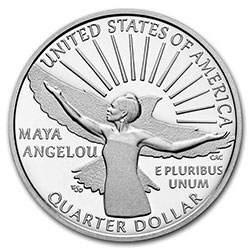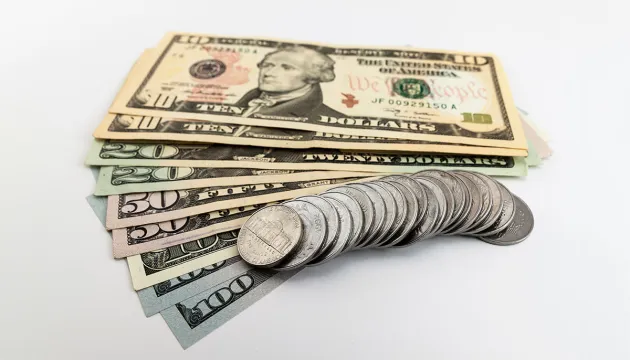Money 101 Quiz
Maya Angelou spoke six languages and was the first African- American poet to compose and recite a poem during a presidential inauguration. Maya Angelou is displayed on the first coin in the American Women Quarters™ Program.

Abraham Lincoln, the tallest President at 6ft. 4in. is currently featured on the United States one-cent coin, widely known as the penny.
Thomas Jefferson invented the revolving book stand, the swivel chair, and so much more! Thomas Jefferson is featured on the United States 5-cent coin, widely known as the nickel.
Franklin D. Roosevelt was elected as President of the United States for an unprecedented four terms. Franklin D. Roosevelt had a passion for stamp collecting and is now featured on the 10-cent coin, widely known as the dime.
Research performed on a set of George Washington’s dentures in 2005 showed they were made from gold, ivory, lead, human, and animal teeth. George Washington is the first President of the United States of America and is featured on the 25-cent coin, widely known as the quarter.
George Washington was a fundamental voice when developing the constitution of the United States of America. George Washington is depicted on the United States $1 dollar bill.
Abraham Lincoln is the 16th President of the United States of America and a self-made lawyer. A fun fact about Abraham Lincoln is he is enshrined in the Wrestling Hall of Fame, only being defeated once in approximately 300 matches.
Alexander Hamilton founded what is now the New York Post, and the Bank of New York. Alexander Hamilton captained the United States Army longest serving unit and is depicted on the United States $10 dollar bill.
Andrew Jackson is the only President of the United States to have been a prisoner of war and lived with a bullet in his chest for 40 years. Andrew Jackson previously appeared on the United States $5, $10, $50, and $10,000 denominations and currently appear on the United States $20 dollar bill.
Benjamin Franklin acquired only two years of formal education and managed to become a great inventor and founding father of the United States. Benjamin Franklin is depicted on the United States $100 dollar bill and was a signer of the Declaration of Independence.
Sacagawea was a member of the Lemhi Shoshone tribe. Sacagawea was only 15-years old when she was hired by Captain Lewis & Clark to explore western lands of the United States. In 2001, Sacagawea was given the title of Honorary Sergeant and is depicted on the first dollar coin.
Nina Otero-Warren was a leader in New Mexico’s suffrage movement to grant women the right to vote and the first woman superintendent of Santa Fe public school. Nina Otero-Warren is depicted on the on the Fourth coin in the American Women Quarters™ Program.
